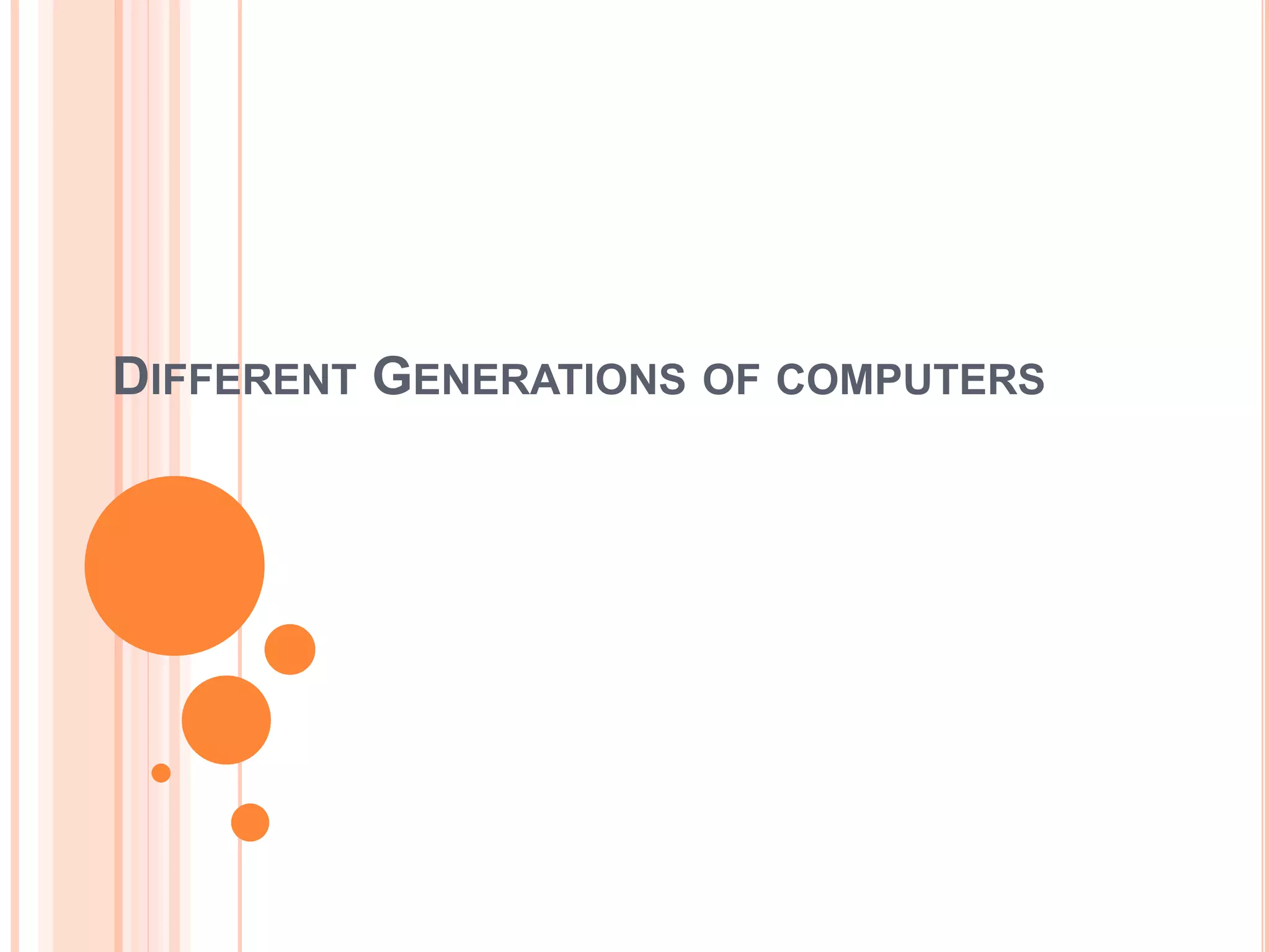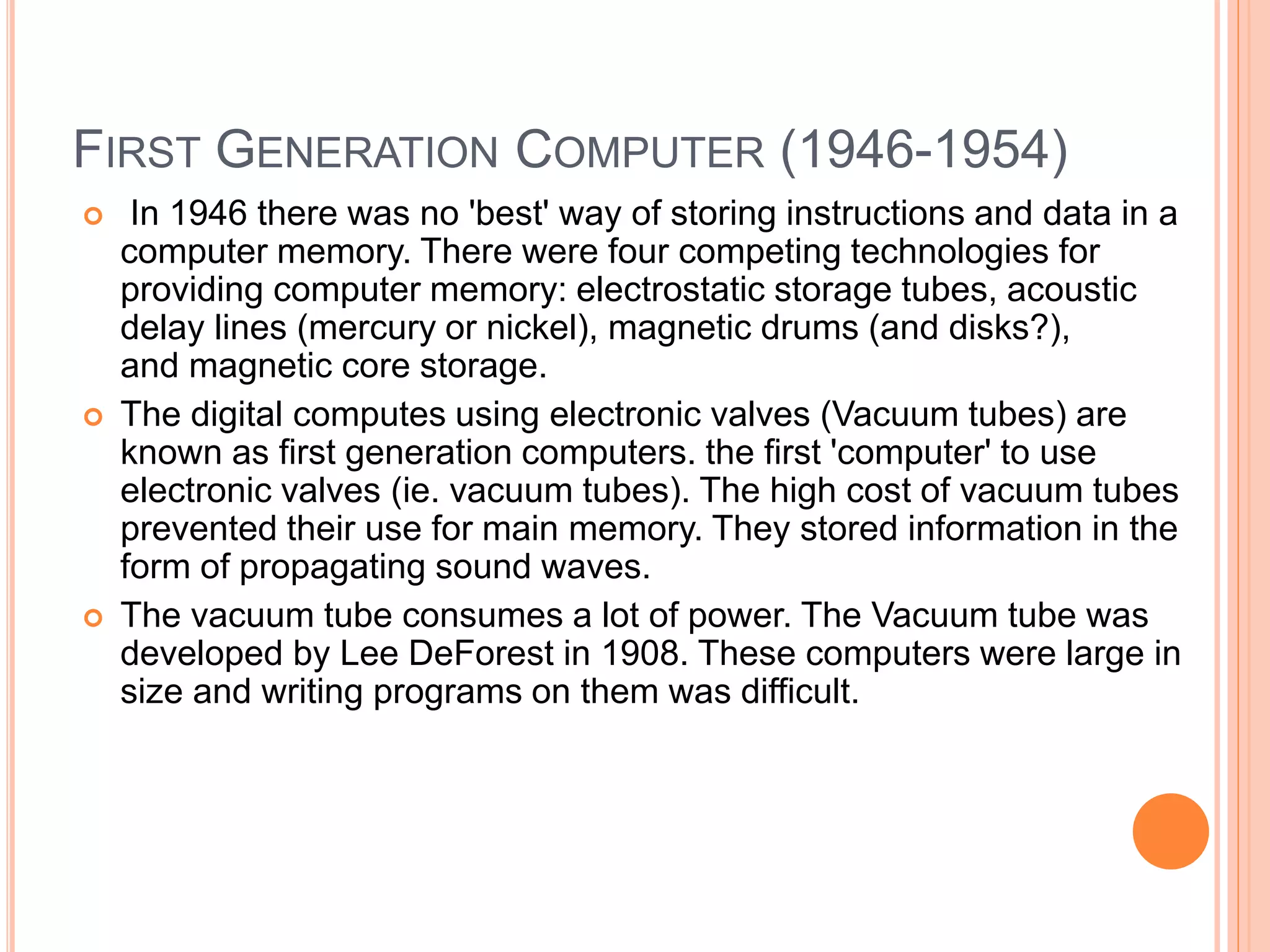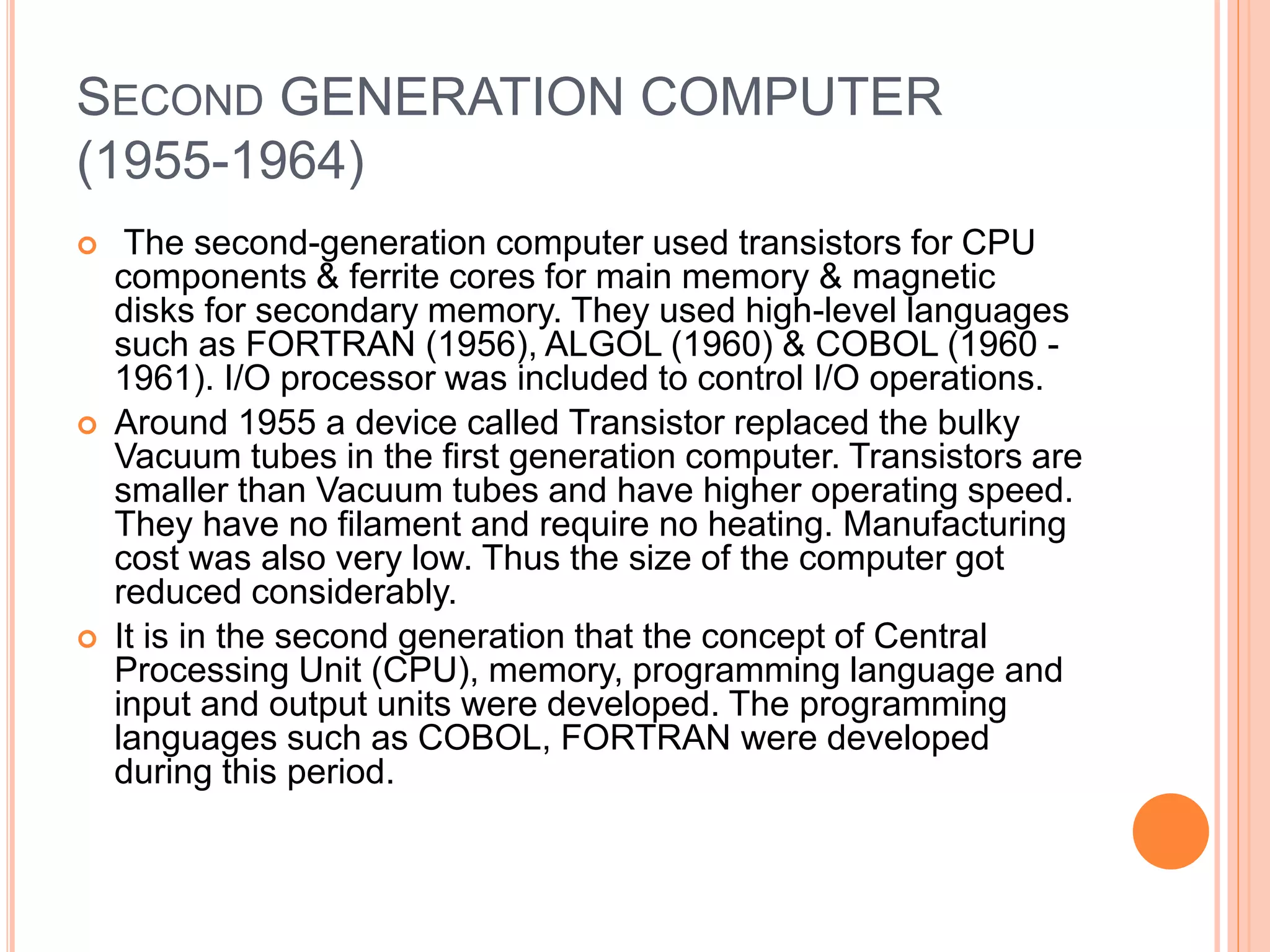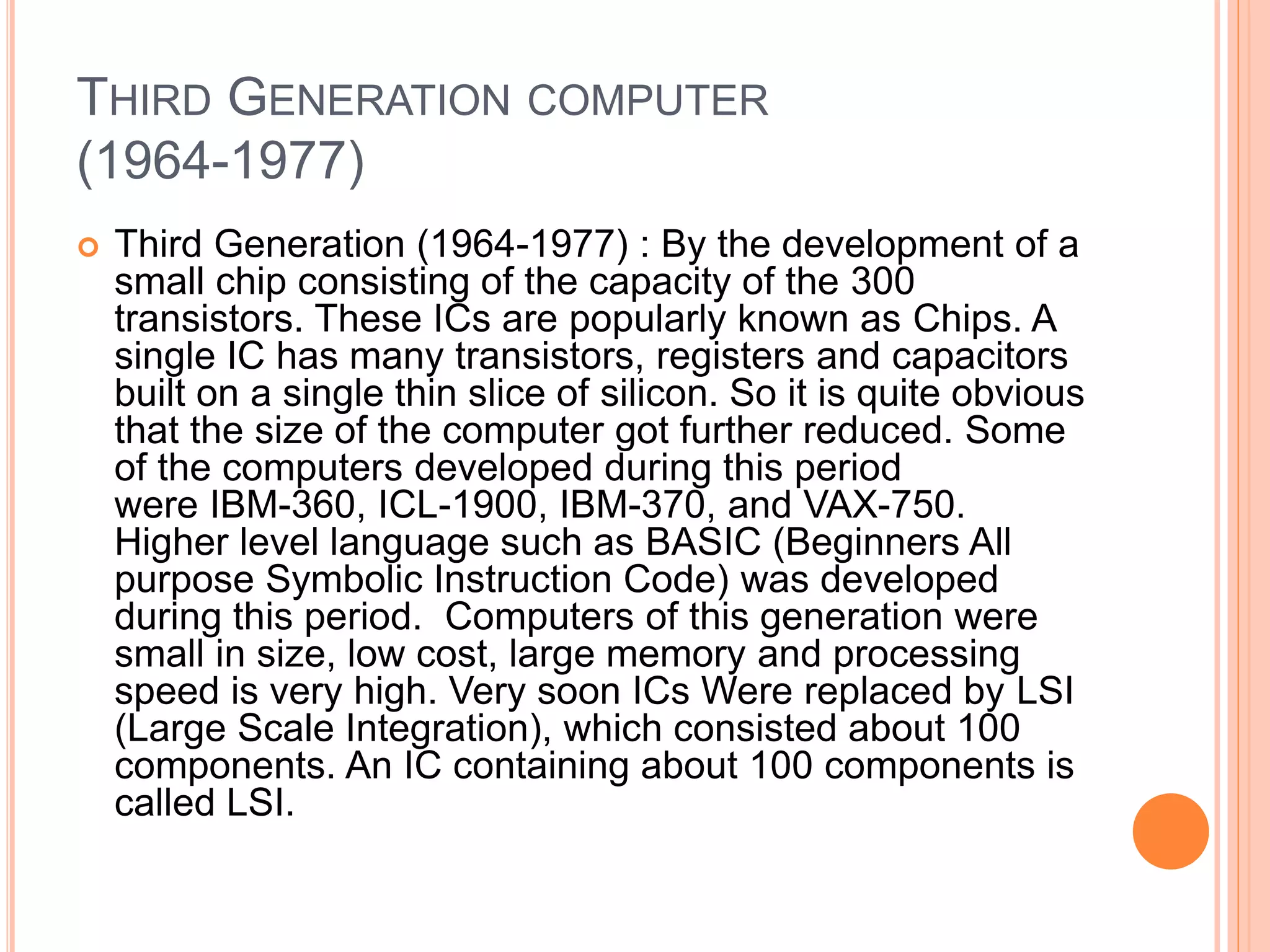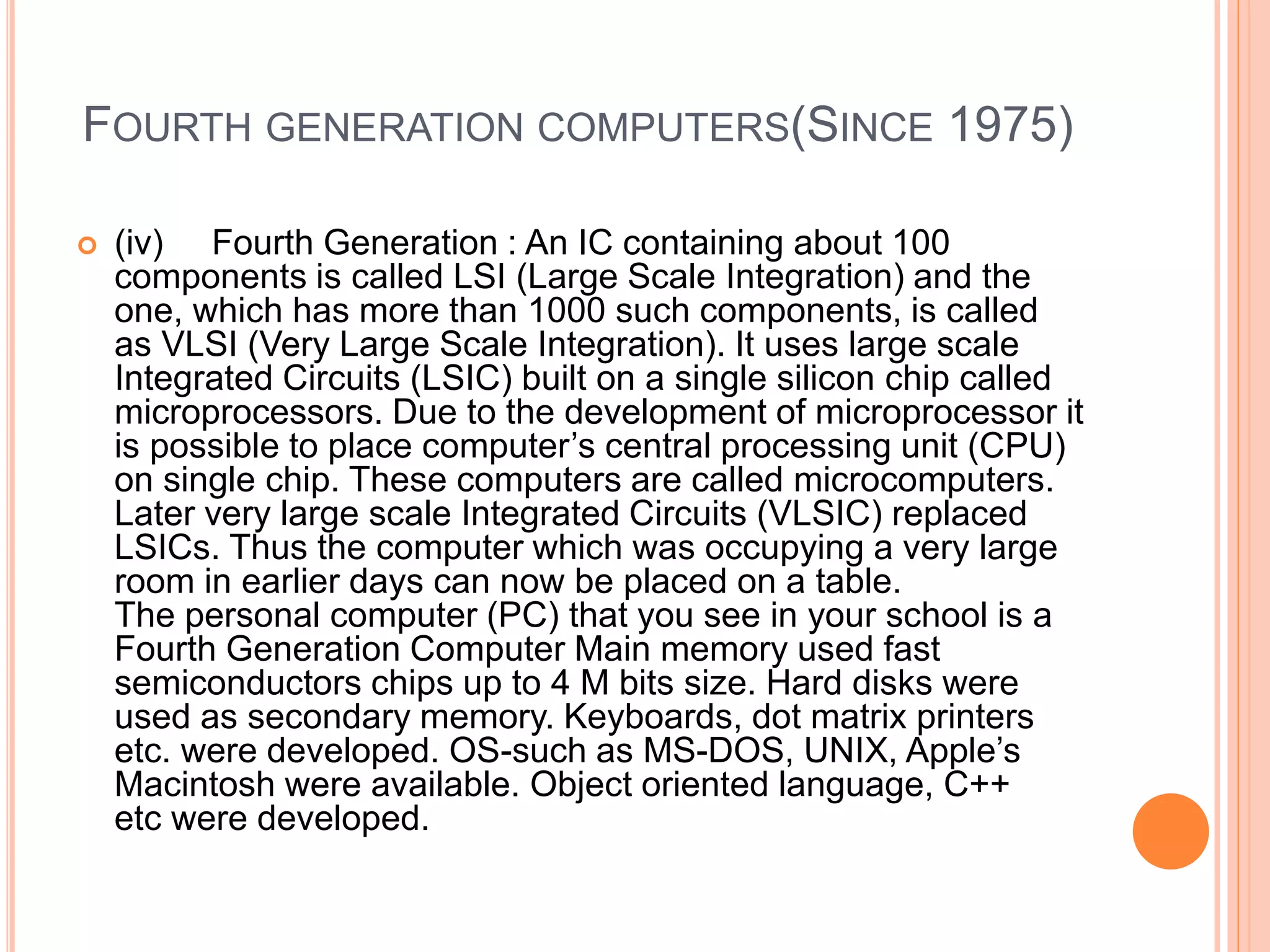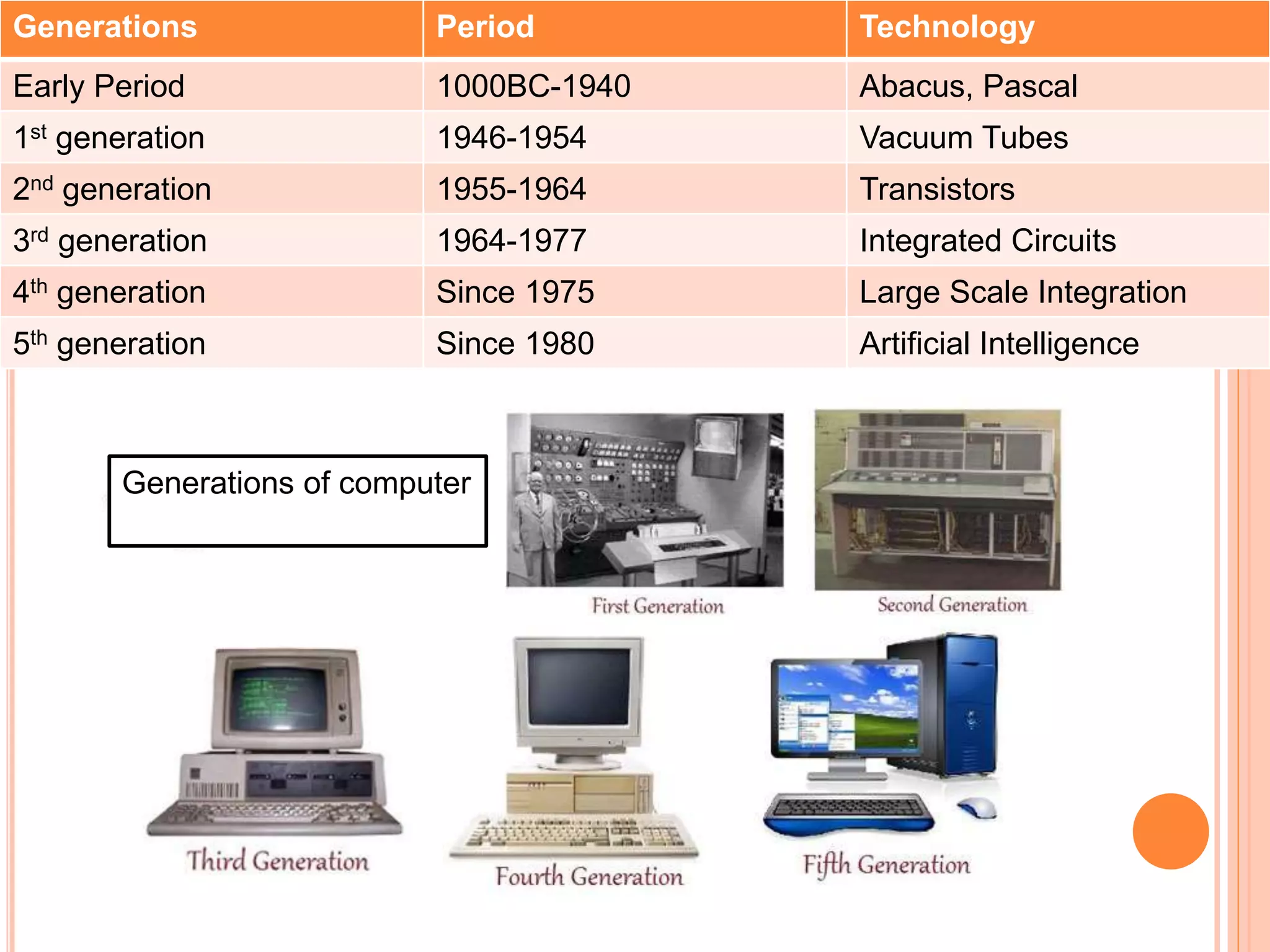The document discusses the five generations of computers from the first to fifth generation. The first generation used vacuum tubes and stored data using acoustic delay lines. The second generation used transistors for CPUs and magnetic cores for memory. The third generation saw the development of integrated circuits which further reduced the size of computers. The fourth generation used microprocessors and microcomputers became common. The fifth generation uses artificial intelligence techniques.
